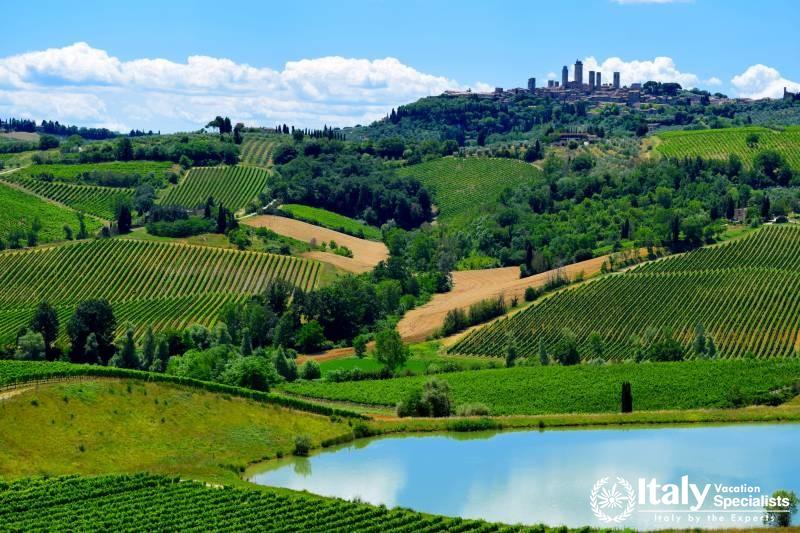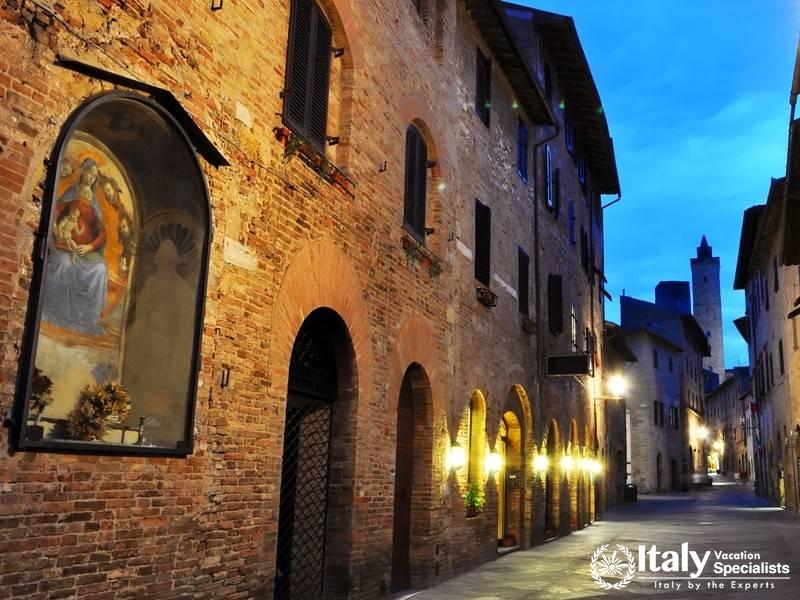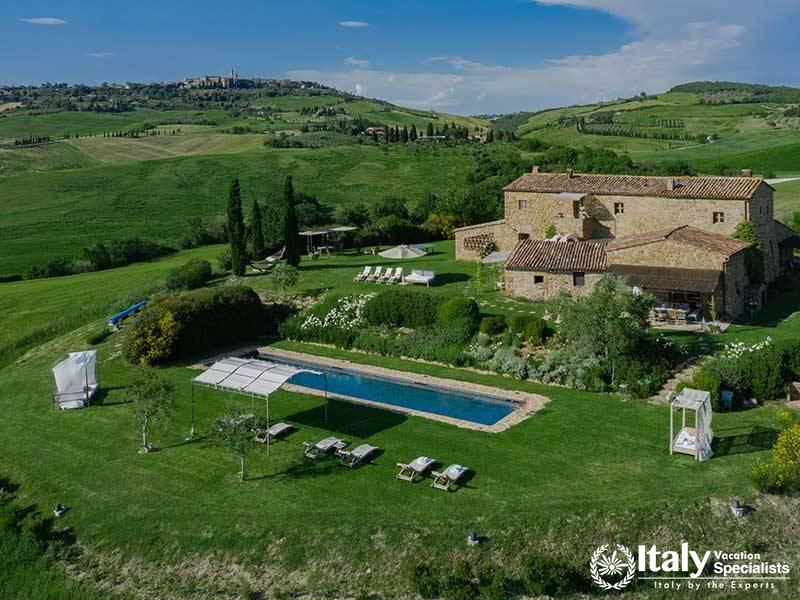Overview
San Gimignano is a central town in the region of Tuscany, Italy and it is one of the more famous Tuscan towns known to many as the "Manhattan" of Tuscany. This is because approaching San Gimignano from any direction, you will see first that it cascades down a small hill about 325 meters high, overlooking the Val d'Elsa. Then you will wonder about the many "skyscrapers" that dart upward mostly near its uppermost reaches. This is the Town of the Towers, one of the prettiest, most well-preserved medieval towns in all of Italy.
There is evidence that San Gimignano began as an Etruscan settlement as long ago as 500 BC. Later, it was a Roman town on the Via Francigena, between Siena to the south and Lucca to the north. Nothing of moment seems to have occurred during the Roman period, except, during the fall of Rome, when, according to legend, the Bishop of Modena (whom later became Saint Gimignano for whom the city is named) saved the city from barbarian invaders.
So, how to explain the towers? A little history will help.
During the early Christian era, San Gimignano was one of several villages under the domination of the Bishop of Volterra. Toward the end of the 9th Century, the Bishop granted the town the right to hold a weekly market, setting the town on a course of growing importance in the area. In 949 AD, San Gimignano became a city and by 998 AD, the citizens had erected the first ring of walls there. Noblemen and commoners alike built within these walls to take advantage of the protection they offered.
For a period of about three centuries from these early days, there was conflict between the Bishops of Volterra and the local nobility and wealthy signori of the city, with power shifting back and forth between the Bishop's faction (the Guelphs) and the faction identified with the Holy Roman Emperor (the Ghibellines).
In 1199, at a time when the Bishop had once again asserted control he shrewdly offered a tax incentive to noblemen and wealthy merchants who built within the city walls, a second set of which were built a couple of years later.
At the same time, cultivation, harvesting and exportation of saffron and crocuses on the slopes of the Val d'Elsa, was generating great wealth for land owners now living in the city. Within the confined space circumscribed by the walls, the wealthy families competed with one another to display their wealth, resulting in the building of the first towers to overcome the lack of space on the ground. These wealthy families also funded the building of various piazzi (court yards or squares), churches and various other public buildings still extant in San Gimignano today.
So intense was the tower-building competition, that a local ordinance was passed to prohibit the building of any tower higher than the 50 meter (165 ft) high city hall, known as the Rognosa. Seventy two such towers were built, of which only 14 remain standing today.
The building of towers was very common in medieval towns and cities of the era, including in cities like Florence, Bologna and Perugia, but except for a few isolated instances, the towers either collapsed, were destroyed in war, or were pulled down during rebuilding programs.
They survived mostly because as peace came to the area, and people, towns and connecting highways moved to the valleys, San Gimignano lost the importance it had during the medieval era. In other words, the town retains its medieval appearance - and all that medieval charm - precisely because no significant changes have occurred within the city walls for hundreds of years.
But, because it has been so well preserved in its medieval condition, it is now a major attraction to tourists and travelers, whose money is now the economic life blood of San Gimignano. However, the fact that it is such a heavily touristed town should not deter you from visiting, although an off-season visit is recommended. It is a beautiful and unforgettable place, redolent of a profound, not a superficial, medieval atmosphere.
The color of its stone, a warm ochre, that radiates a golden lustre in the afternoon light, its twisted and winding streets, its convivial piazzas, its cool and solemn Duomo and churches, its charming cafes and restaurants, can take you back in time in a way that few other places can. And, from the tops of the famous towers, you can see a rolling, green and verdant Tuscany - a Tuscany you think only exists in your imagination, but is real indeed.
Jesse Andrews, 2016
Gallery
Location
Private and Small Group Tours
Multi-Day Holidays Tours
Hotel
Apartment
Gallery








Our Private and Small Group Tours
Our Multi-Day Holidays Tours
Our Featured Properties
For Customized Holidays and Expert Advice, for travel in Italy and the Mediterranean,
get in touch with your travel agent or contact us via our
Trip Planning Questionnaire.
-
Direct In Italy: +39 375 823 5314
-
Toll Free: 1-866-779-2565





































